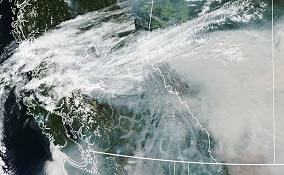All about wildfire
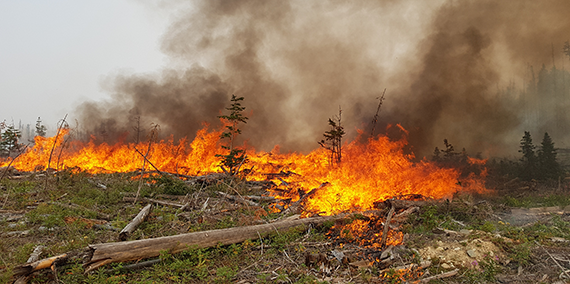
Wildfires are unplanned and dynamic. They change over time based on the weather, available fuel and the landscape. Fire is a chemical reaction to the combination of three elements: oxygen, heat and fuel. Preventing or putting out a wildfire requires managing at least one of these elements.
On this page
The Fire Triangle
- Oxygen (from the surrounding air)
- Heat (ignition caused by lightning or human activity)
- Fuel (trees, vegetation or other organic matter)
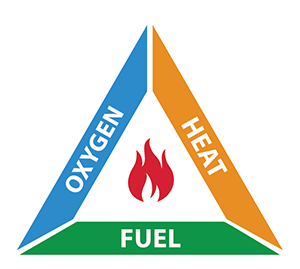
Since wildfire fuels, such as trees, brush, grass and peat, are different from those that feed structural or vehicle fires, they require different response tactics.
The term "fire behaviour" describes the way a wildfire burns, spreads and changes over time. BC Wildfire Service uses a pre-determined scale called wildfire "rank" to assess wildfire based on how the fire looks and behaves.
What fuels fire behaviour?
Fire behaviour is affected by:
- Fuel
- Weather
- Topography (the shape of the landscape)
These three factors interact with each other to produce different wildfire characteristics, or distinguishing traits.
Fuel
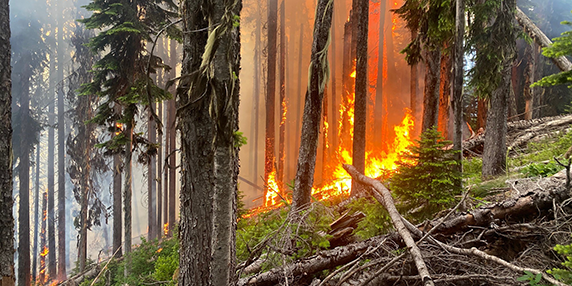
B.C.'s forests are diverse. Since wildfires burn forest vegetation, the type and characteristics of forest fuels available are a key factor in fire behaviour. Three key factors are monitored:
- Moisture content: Dead vegetation loses moisture more quickly than living vegetation and dryer fuels ignite and burn more easily
- Size: Smaller items, such as twigs, grass and leaves, ignite and burn more quickly but larger items, such as trees and branches, take longer to ignite but burn hotter
- Continuity: Fuels that are spread out consistently, such as dry underbrush in a forest, allow fire to spread faster and burn more intensely. Lower branches on trees also allow fire to travel up trees
Weather
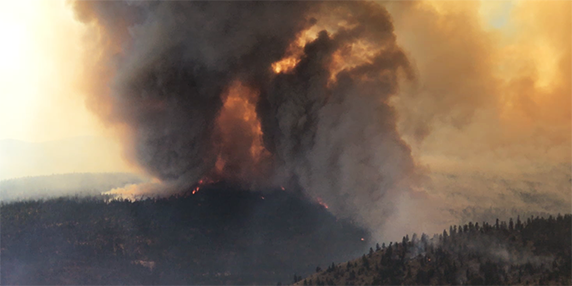
"Fire weather" is carefully monitored and allows the BC Wildfire Service to plan ahead. Climate change has contributed to drier and hotter summers, and these conditions have resulted in extended wildfire seasons in recent years. It’s highly likely that this trend will continue. Weather and climate patterns have major impacts on fire behaviour:
- Wind:
- Higher wind speeds increase fire activity
- Changing wind directions may change the direction a fire is spreading
- Wind helps reduce the moisture content in fuel
- Temperature:
- Higher temperatures increase fire activity
- Humidity:
- Lower humidity helps dry fuels and increases fire activity
Topography
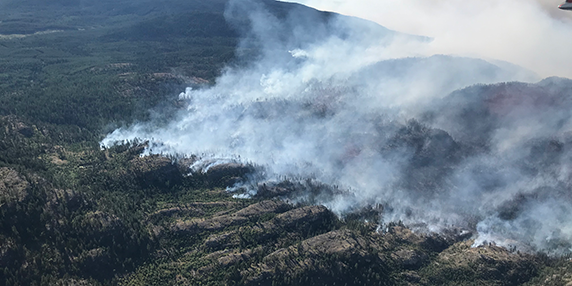
Topography is the shape of the landscape. B.C. has diverse topography, ranging from steep mountainous regions to relatively flat plains and forested areas. The shape of the land changes fire behaviour:
- Slope:
- Fires tend to spread more quickly and burn uphill, especially when driven by upslope winds
- Downslope winds and burning material rolling downhill increases downslope spread
- Aspect (the compass direction a slope faces):
- South-facing slopes receive more sunshine which dries fuels, warms temperature and increases fire activity
- Terrain:
- Wind speed may be increased by valleys
- Mountainous regions can affect windspeed and direction
Want to learn more about fire weather?
- Find out more about weather stations operated by BC Wildfire Service
- View weather maps showing the precipitation levels, wind speed, relative humidity and temperature across B.C.
- Read the latest seasonal outlook.
The Canadian Partnership for Wildland Fire Science (Canada Wildfire) aims to be an international leader in wildland fire science, shaping wildland fire management in Canada and around the world.

